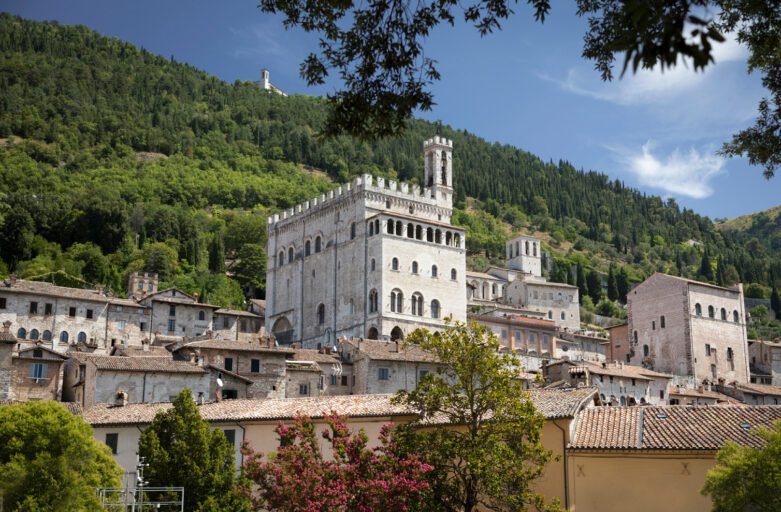Tag: Gubbio
Festa dei Ceri, history and tradition in Gubbio
The Festa dei Ceri (or Saint Ubaldo Day) is one of the oldest and most suggestive events that takes place every year on 15 May in the Umbrian town of Gubbio, attracting thousands of tourists from all over the world.
The Christmas tree of Gubbio: the tree of the Guinness World Records
The biggest Christmas tree of the world is in Umbria, precisely in the Medieval city of Gubbio. Made for the first time in 1981, the tree is lit every year on the night of 7 December. In 1991, ten years after the first lighting, it entered the list of the Guinness World Records.
The Roman Theater in Gubbio
South of Gubbio’s Medieval quarters the Guastuglia Plain (pron. goo-ast-oo-Leah) lies, delimited west by the so-called vallum (military defense line), and east by a river called Camignano (pron. come-in-ya-know).
Saint Ubaldo’s Basilica – Gubbio
A Brief Biography The personage of young Ubaldo – who was officially declared a saint on March 5, 1192 – cannot be divided from Gubbio and the great love the town’s inhabitants still have for him.
Saint Francis’ Church in Gubbio
Francis, the Man; and Gubbio The story of Gubbio and Francis of Assisi means the discovery of an intense relationship, interwoven with travels, friendship, and feelings. Francis’ father, Bernardone (“Big Bernard”)
Piazza Grande (The Main Square)
A Decentralized Center Gubbio rises at the foot of Mount Ingino with a strong self-consciousness. Framed within a luxuriant Nature, rich in woods and trails, it is considered one of the most beautiful Medieval towns in Italy.
Palace of Consuls
A Giant in the Square The Palace of Consuls (Palazzo dei Consoli), built in the years 1332-49, rises dramatically on the background of Piazza Grande, the Main Square. It is more than 60 meters (180 feet) high, including its originally shaped bell tower that still nowadays “calls” the citizens.
The Ducal Palace
At the Court of the Duke of Urbino
The Ducal Palace was built by decision of Federico da Montefeltro in a town area called Corte Vecchia (the Old Court) – right in front of the wonderful Gothic Cathedral dedicated to Saint Mariano and Saint Giacomo, martyrs of the 13th and 14th centuries. The palace was the very first example of Renaissance architecture in Gubbio, which it still overlooks.







